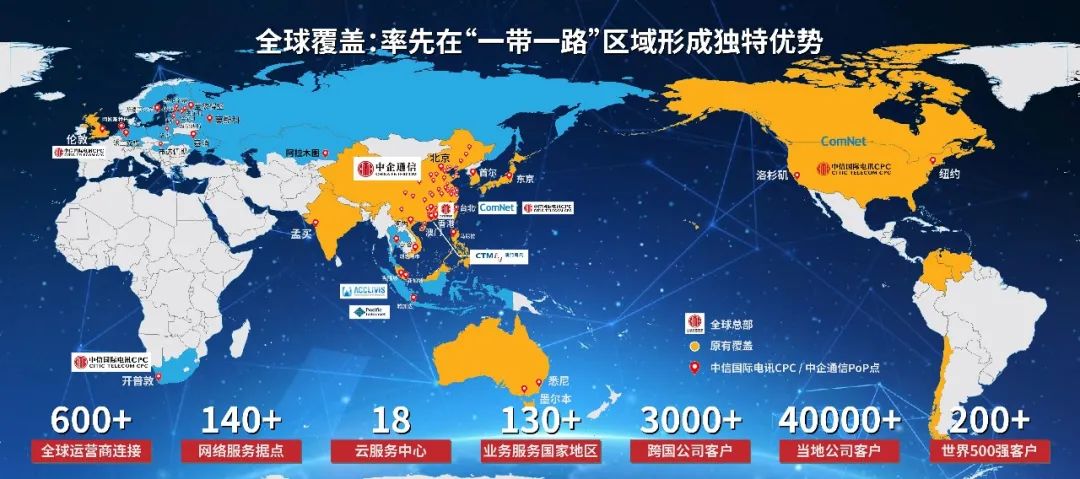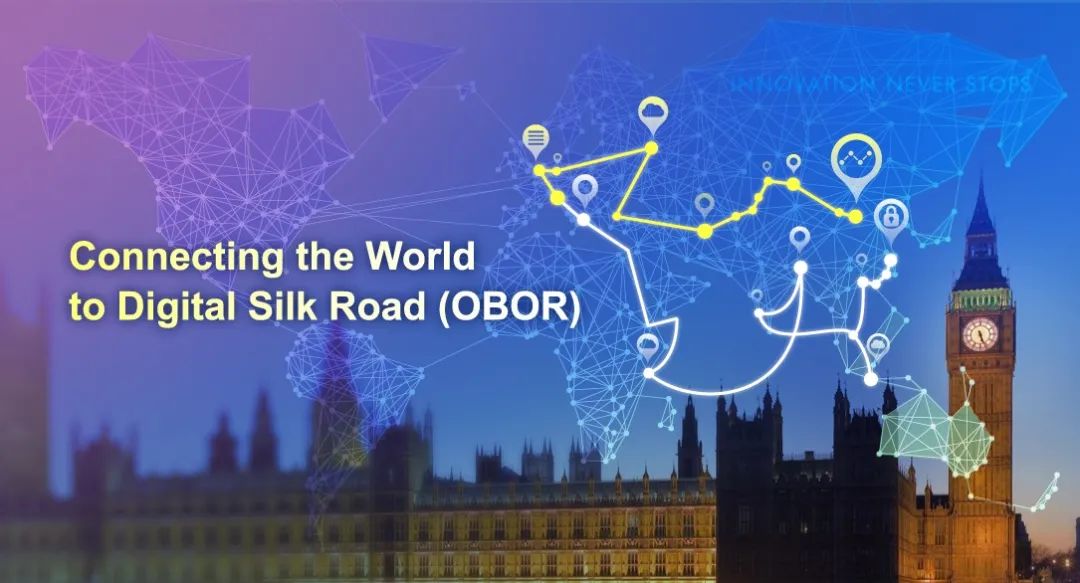![From“The Belt and Road Initiative” to]()
What does the RCEP, which took eight years to get signed, have to do with “The Belt and Road Initiative”?
CITIC
Telecom CPC has left its footprint from "The Belt and Road Initiative"
to the RCEP Free Trade Zone, what is going on?
Today, we
will take you back into history, glance around the present moment, and foresee
the future.
Let us start with the two commercial roads of ancient China.
Modern Heritage from Ancient "Silk Road" by Land and Sea
You may
not know that lots of everyday foods are "imported" into
China, such as carrots,
tomatoes, onions, celeries, watercress, cabbage... They still retain their own
origins in their Chinese names. These foods from the Silk Road by land and sea still
enrich our dining table.
As early
as the Qin and Han Dynasties, China's trade routes by land and sea had been
opened up, and gradually expanded in later generations. In 1877, a German
geographer, Ferdinand von Richthofen, named the ancient commercial route that began
in Luoyang, passing through the Western region and Central Asia, and connected
India as “Silk Road” in his book about geography. It was commonly recognized by
many scholars.
Modern
scholars studied this piece of history, further extending the meaning of
"Silk Road". It becomes the synonym of economic and cultural
exchanges between the Oriental and the Occidental. Even prime goods traded
through the maritime route are not silk, but spices, porcelains, and other goods,
the ancient maritime commercial road is still known as "Maritime Silk
Road." We usually associate the country name “China” with porcelains, but
indeed, ancient Greek and Roman geographers and historians referred “China” as
“Serica”, which means "Country of Silk". Therefore, both silk and
porcelains were the synonyms of China in the eyes of foreigners in ancient
times.
In
ancient times, China enjoyed an absolute surplus in foreign trades. During
Southern Song Dynasty, maritime trading could bring about a considerable revenue.
Merchants could “gain substantial profits, including pearls, rhinoceros’ horns,
spices and horses after years of maritime trading”, bringing a mega amount of
tax revenue to the country. The tax revenue from trading could account for 30%
of the state’s fiscal revenue.
Today,
the importance of "trading" to a country is needless to say, the
value of the two "Silk Roads" in ancient China has also been
re-examined as an influential cultural opportunity for developing foreign trades.
In 2015,
China issued the "Vision and Actions on Jointly Building Silk Road
Economic Belt and 21st-Century Maritime Silk Road". For trading by land,
international channels are eminently relied on, with central cities along the
route as supports, and key economic and trade industrial regions as cooperation
platforms. New international economic cooperation corridors, including bridges
connecting Asia and Europe, China-Mongolia-Russia, China-Central Asia-West
Asia, China-Indochina, can be jointly built. For trading by sea, pivotal ports
are treated as nodes to jointly build a smooth, safe, and efficient
transportation channel.
![From“The Belt and Road Initiative” to]()
As a
result, "The Belt and Road Initiative " has inherited the
cultural connotation of the ancient Silk Road and has now been given a new
meaning for this era. After all, no country in this current era has an absolute
surplus in foreign trades. On the contrary, as the global industrial chain further
extends and the division of labour becomes more and more detailed, countries
are becoming more dependent on the international market. Countries and regions
continue to sign trade agreements to promote "zero tariffs" in order
to remove trade barriers and achieve tariff reduction, and eventually attain
mutual trade benefits. These favourable policies are opportunities for
enterprises; however, if they want to seize the opportunities, they need
efficient communications to support.
Network
Interoperability: The Forerunner and Critical Foundation of " The Belt and
Road Initiative "
In
recent years, CITIC Telecom CPC has successively expanded its development
in Singapore, Europe
and other countries and regions, including Network Operation Centers in the Baltic Sea,
Moscow, and Tallinn, and a data center in Tallinn, the capital of the Republic
of Estonia, known as Tallinn Internet Exchange (TLL-IX). The company has huge network
resources and rich experience in Central Asia, and Central and Eastern Europe. With
24 Points of Presence (POP) locations in 14 countries, it can significantly satisfy
customers’ diverse global business needs and help them develop digital businesses.
After Acclivis,
a leading IT service provider in the Asia-Pacific region, became a subsidiary
of CITIC Telecom, the Group has strengthened its capabilities in providing
Internet access, cloud services, and system & network integration services
in Southeast Asia. In the meantime, a prominent Internet Service Provider (ISP)
in Singapore and Thailand, Pacific Internet is also held by CITIC Telecom.
The
delivery capability of CITIC Telecom CPC covers silk roads by land and sea
altogether. It has formed close collaboration with more than 600 operators
around the world. It has over 140 POP in more than 130 countries and regions, nearly
20 Cloud service centers, more than 30 data centers and around 50 self-managed SD-WAN
gateways.
RCEP:
Territory expansion of contemporary "Silk Road PLUS"
From the
ancient "Silk Road" by land and sea to the 21st century " The
Belt and Road Initiative ", what do they have to do with the recently
signed RCEP?
"Silk
Road" refers to foreign trades with China; however, under the development
trend of regional economic integration, China re-construct the ancient Silk
Road and derive the new concept of modern Silk Road. For China, the signing of
RCEP represents the in-depth territory expansion of the modern "Silk Road”
and is also known as "Silk Road PLUS".
From the
map, we can spot that there were two ancient Chinese silk roads. The silk road by
land was an international route from China to India and other South Asian
countries, and the silk road by sea ran through coastal countries along the
Pacific and Indian Ocean. This is basically in line with the regional division
of modern Asia-Pacific economy. Under economic globalization, countries in the
Asia-Pacific region have also embarked on a long road to regional integration
in modern times. In the words of an international trade scholar Bhagwati, trade
agreements in the Asia-Pacific region are as inextricable as "pasta".
China is
connected to many Asia-Pacific countries geographically. For thousands of
years, there have been inseparable connections of human, languages, cultures,
trades, and clans. The Asia-Pacific region is a hub for development in the 21st
century, and it is also a pivotal region where superpowers are competing to
invest.
However,
the trade agreements among the Asia-Pacific countries are intertwined, which
may restrict the further development of the Asia-Pacific region. The
integration of trade agreements is the most urgent task in order to solve the
"pasta" problem. The RCEP is finally reached in 2020, which is in no
way an easy year. The formation of this super large-scale free trade zone has
allowed nearly one-third of the world's economy to form an integrated market.
By further reducing trade barriers within
the region, RCEP enables member states to further utilize their own
technological, labor and natural resource advantages to form a clearer regional
system for division of production. After the formation of a unified market in
the region, the effect of "trade creation" will be more obvious: the
cost of export-oriented enterprises will be significantly reduced, and the
import cost of enterprises that rely on imported raw materials and components
will also be greatly reduced. For each consumer, they can buy more consumer
goods at lower prices. For enterprises, the threshold to enter the member
states in the region has also been lowered.
However, the formation of regional market
integration does not mean that all obstacles of trade exchanges and daily
business operations within the region have been removed. Not only will cross-regional
and time zone issues be magnified, but multicultural collisions and exchanges will
also become more frequent in operating businesses.
By then, enterprises will encounter more intangible challenges on communication
issues in their daily operations, and it will be difficult to solve them simply
by specific trade regulations.
Take a global chain enterprise as an
example, it has thousands of stores in different countries and regions around
the world. As their stores are located in with different cultural backgrounds,
resolving the unification of "internationality" and
"locality" becomes the most difficult task when performing network
deployment and daily operations & maintenance in these stores. "Internationality"
refers to the companies successfully build up networks across different regions
and allow all stores smoothly access to the network under an unified management;
"locality" refers to that no matter which region the store is located
at, problems can be solved instantly when communication fails. Therefore, when
selecting a ICT service provider, an enterprise should consider not only the
abundance of international resources, but also the ability to provide localized
services.
From "The Belt and Road Initiative" to "RCEP": To build a digital Silk Road Leading to
the Future
If as expected, the RCEP will become the
largest free trade zone in the global economy under the Asia-Pacific
integration. According to statistics in 2019, the total population of the 15
member states has reached 2.27 billion, with the GDP reaching 26 trillion U.S.
dollars, and total exports accounting for 5.2 trillion U.S. dollars. All three
indicators account for about one-third of the global total amount.
The complementarity among member states of
RCEP is obvious, and their unique advantages on production factors can form a
complete industrial cooperation chain. Cooperating under the trade agreement, multinational
companies can optimize the resources allocation among member states,
redistributing production factors, hence saving costs and improving efficiency.
The space for co-development is very broad. Companies that want to take
advantage of the RCEP policy will undoubtedly need to break through the digital
barrier: communications, in order to truly transform into a driving force for business
development.
Take a multinational group as an example.
Headquartered in Guangzhou, China, the group has established 11 branches and
factories overseas, and sales network covering more than 20 countries and
regions. It has established its own industrial chain system from production,
sales to after-sales. With such a large industrial chain, the timeliness of
management directly affects its efficiency. They need to ensure the stability
and security of data transmission between oversea and domestic business systems.
For the applications management, it is necessary to be convenient and efficient.
In addition, in terms of sales, franchise stores, cashier systems, purchase
systems, etc., they all need to be connected to the local network, which may be
easily exposed to network attacks. For the reseller management system which is
used to place orders, the quality of network connections will directly affect
the crucial inventory management. The ordering system must accurately and
quickly notify the factories of the details and quantity of orders, which
requires a smooth and safe internal data transmission channel.
This is not a special example. Not only
multinational companies, but all large enterprises with many branches have similar
requirements.

CITIC Telecom CPC is a comprehensive ICT
solution partner for enterprises with more than 20 years of industry
experience. Not only does it have global ICT resources, but also provides
localized services in different countries and regions. Among the RCEP member
states, CITIC Telecom CPC not only has set up dual POP sites in Beijing,
Shanghai, and Guangzhou in China, but also possesses Internet POP resources in
Japan, South Korea, Malaysia, the Philippines, Thailand, Vietnam, and Singapore.
Its capability to serve is strong in the RCEP free trade zone.
With dedicated Network Operation Centers
(NOC), capability for technical customer service that supports 7 x 24 x 365 and
multi languages are forged, taking into account both international and regional
characteristics. If it is a customer’s exclusive account manager, the
customer’s geographical and cultural background will be considered more
carefully. Every account manager masters at least 3 languages. Take the account
managers in South China as an example, they master Cantonese apart from two
international languages, Mandarin and English, to better provide customers with
solicitous and meticulous Managed Service Provider (MSP) services and ensure
zero communication barriers.
In the new era, the influence of RCEP is growing.
CITIC Telecom CPC continues to inherit the spirit of the Silk Road and is
committed to providing global enterprises with more innovative, high-quality,
and reliable ICT solutions. It fights to become a powerful driving force for
enterprises to grasp preferential policies, empowering enterprises to start
their journey of "Digital Silk Road".
Reference:
1.《RCEP簽署:亞太拆牆建做大自貿區》中國新聞周刊HTTPs://mp.weixin.qq.com/s/tn1Id5hbnNVFMRs2vpoafw
2.紀錄片《河西走廊》之《絲路》HTTPs://article.xuexi.cn/articles/video/index.html?art_id=11964376891561211819&study_style_id=video_default&source=share&share_to=wx_single
3.《RCEP是重振全球經濟和反對保護主義的有力工具》公眾號"中國智庫"HTTPs://mp.weixin.qq.com/s/k36CFjcuo6feEjNAlr6ioA
4.《海上絲路和陸上絲路的對接點在哪兒? 》公眾號"人民文學出版社"HTTPs://mp.weixin.qq.com/s/ERIm7FFSpIMZbdEzdUAY1w
5.《數字絲路,為世界發展提速》中國日報網HTTPs://baijiahao.baidu.com/s?id=1599126493657244040&wfr=spider&for=pc
6.《亞太區域經濟一體化的前世今生與未來——後RCEP時代的規則競爭與融合》公眾號"南大自貿研究"HTTPs://mp.weixin.qq.com/s/ooQEE5Z5L1nnhaR5JzWaiA
7.《RCEP正式簽署:多邊主義和自由貿易取得新勝利》公眾號"中國銀行"HTTPs://mp.weixin.qq.com/s/oXw9ufAICjxqu5vLCBhyjA
9.《宋代對外航海貿易貿易額估算及對外經濟的影響》重慶師範大學學報2015年第5期
10.《解讀RCEP:全球體量最大自貿區將為東亞和世界經濟增長注入強勁動力》人民網finance.people.com.cn/GB/n1/2020/1115/c1004-31931547.html












